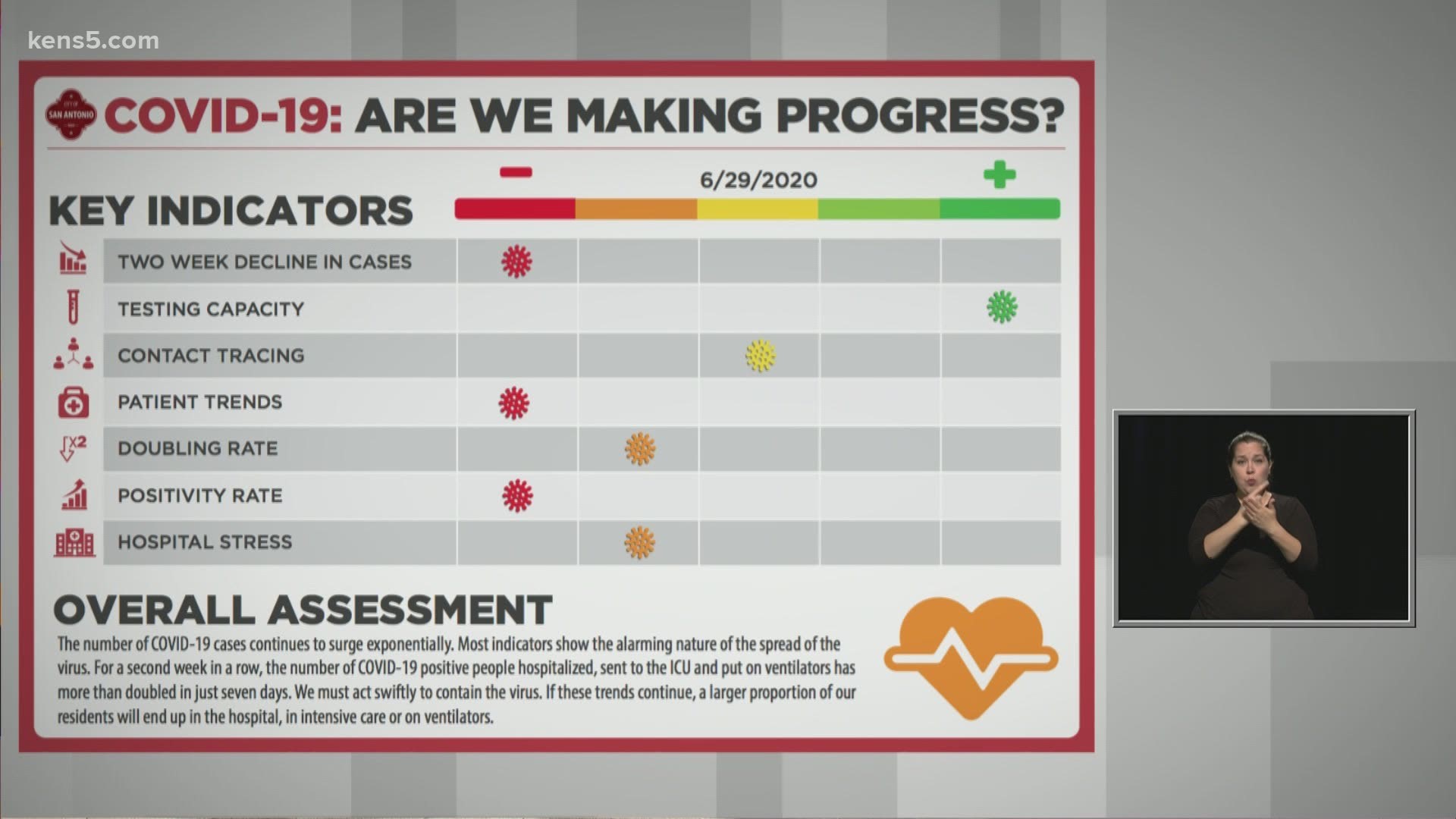SAN ANTONIO — We're tracking the latest numbers from the coronavirus pandemic in San Antonio and across Texas. Here are the latest numbers reported by Bexar and surrounding counties:
- Bexar County: 650 new cases were reported Monday. There is a total of 10,797 cases and 109 fatalities in the county. 881 patients are in local hospitals, and 274 are in the ICU.
- Comal County: The county reported 55 new confirmed and one probable cases on Tuesday, for a total of 654. Seven people have died in the county, while 262 have recovered. The positivity rate is now 10.28%.
- Hays County: 75 new cases reported Monday, bringing the total to 2,661 cases and six fatalities in the county. 84% of those cases are considered active, and 51% of the county's confirmed cases are people between the ages of 20 and 29.
Here are Monday's full numbers. Bexar County reports them daily at 7 p.m.:
How Bexar County is trending:
We're tracking how many coronavirus cases are confirmed in Bexar County each day from the time San Antonio Metro Health began reporting cases more than two months ago. Graphing those daily case numbers along a 14-day moving average provides an accurate picture of the curve in the San Antonio area and the direction we're heading amid the coronavirus.
Metro Health reported 650 newly confirmed cases of the coronavirus in Bexar County Monday, bringing the total to 10,797. That is the second-highest daily increase since the start of the pandemic. No new virus-related deaths were reported, so the total remains at 109 fatalities.

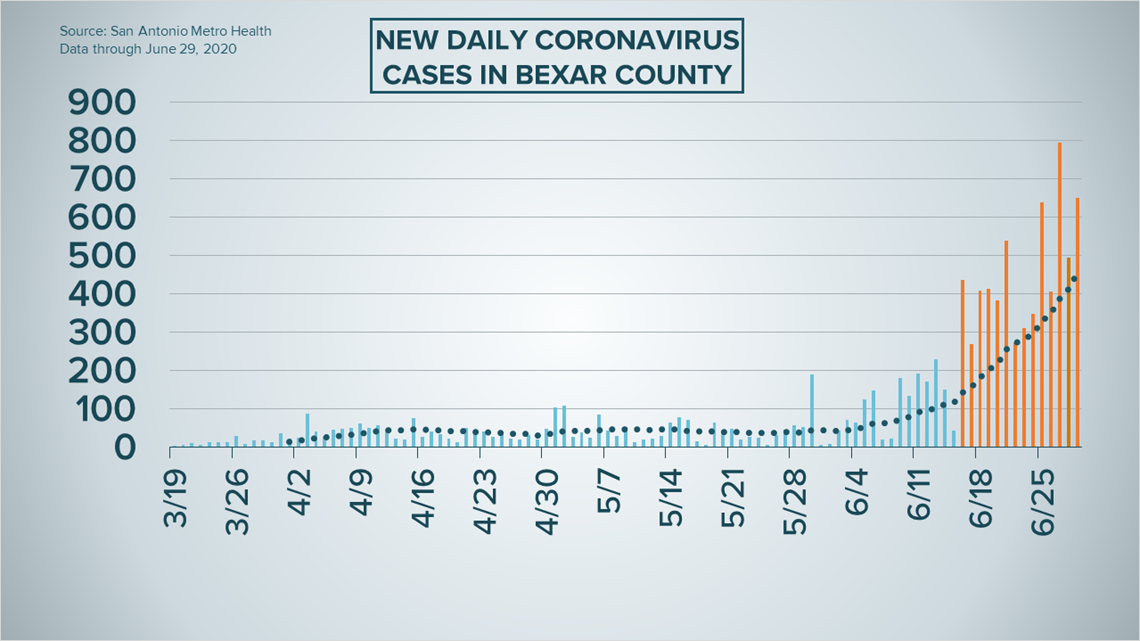
Meanwhile, 881 COVID-19-positive patients are in local hospitals—another high-water mark for Bexar County. This is a jump of 79 from Sunday. The number of coronavirus patients in San Antonio area hospitals has risen by 823% in the last three weeks.

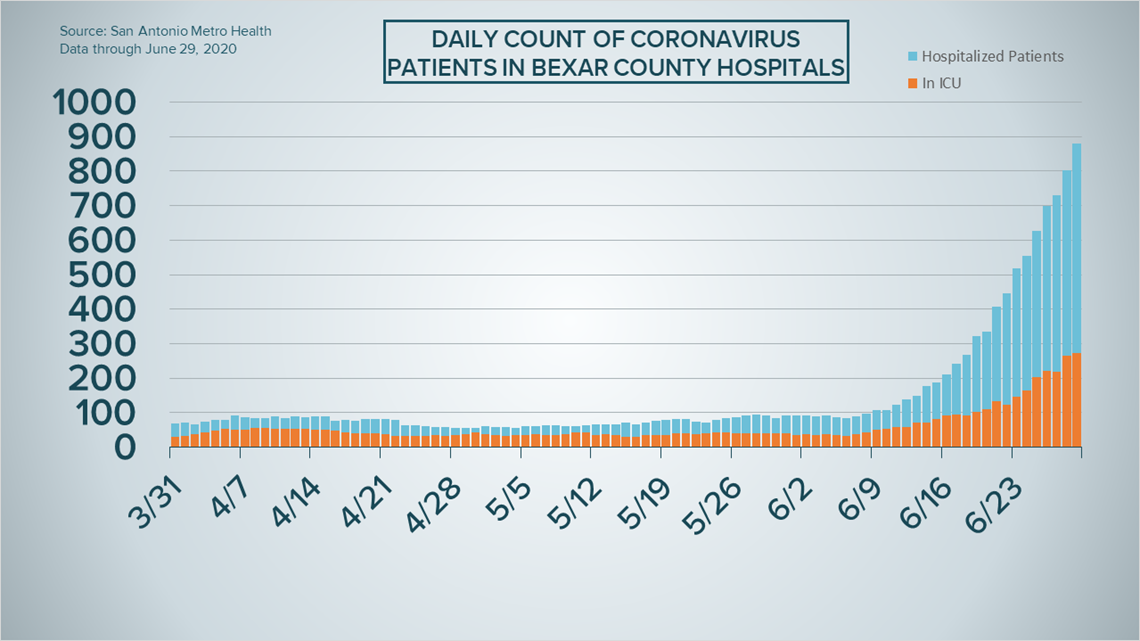
There are currently 274 people under intensive care in area hospitals and 154 patients are currently on ventilators, up from 33 just two weeks ago. Both of those numbers are record highs.
"Half of the people infected with COVID-19 who end up in the hospital have no underlying health conditions," Mayor Nirenberg said during the briefing on Monday. He said that the doubling time has dropped from 13 days to 11 days.
He said that the positivity rate has increased again, and over 20% of the last week's coronavirus tests came back positive.
"The number of COVID-19 cases continues to surge exponentially," Nirenberg said. "For the second week in a row, the number of COVID-19 positive people hospitalized, sent to the ICU, or put on ventilators has more than doubled in the last seven days."
Coronavirus in Texas
Texas reported 4,288 new COVID-19 cases Monday. There had been at least 5,000 new cases reported each of the six days before that, but Mondays tend to bring lower numbers. Over 38,000 new cases have been confirmed in the state in the past week.

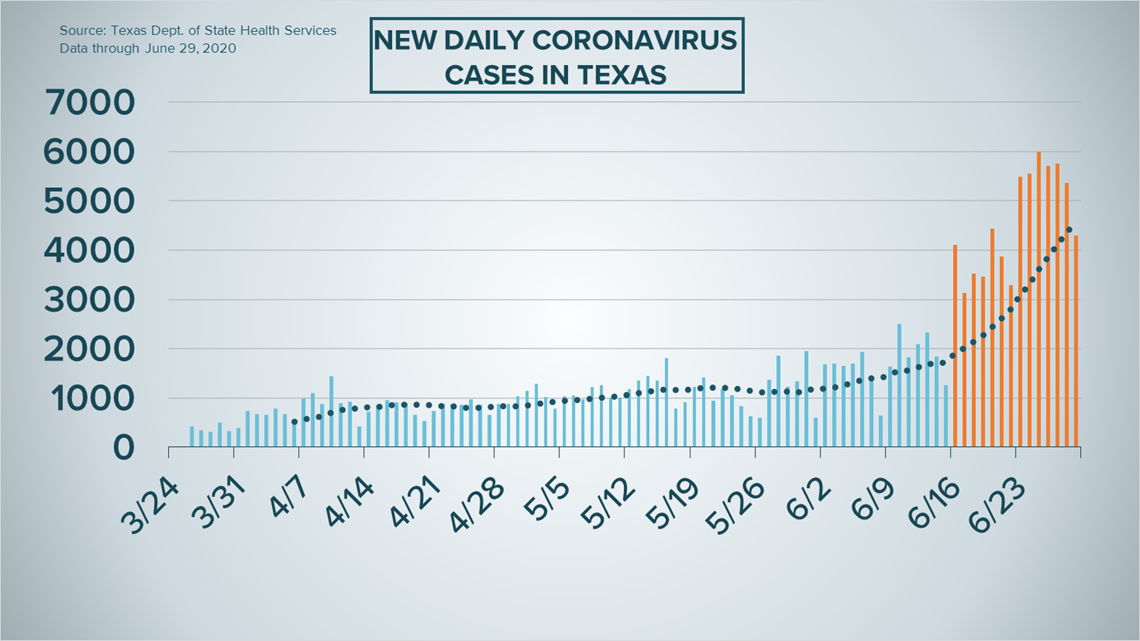
Ten new virus-related fatalities were reported by the state on Monday, bringing the total to 2,403.
The number of current patients in Texas hospitals increased to a new record high of 5,913. There had been 16 consecutive days with record highs reported before Sunday.

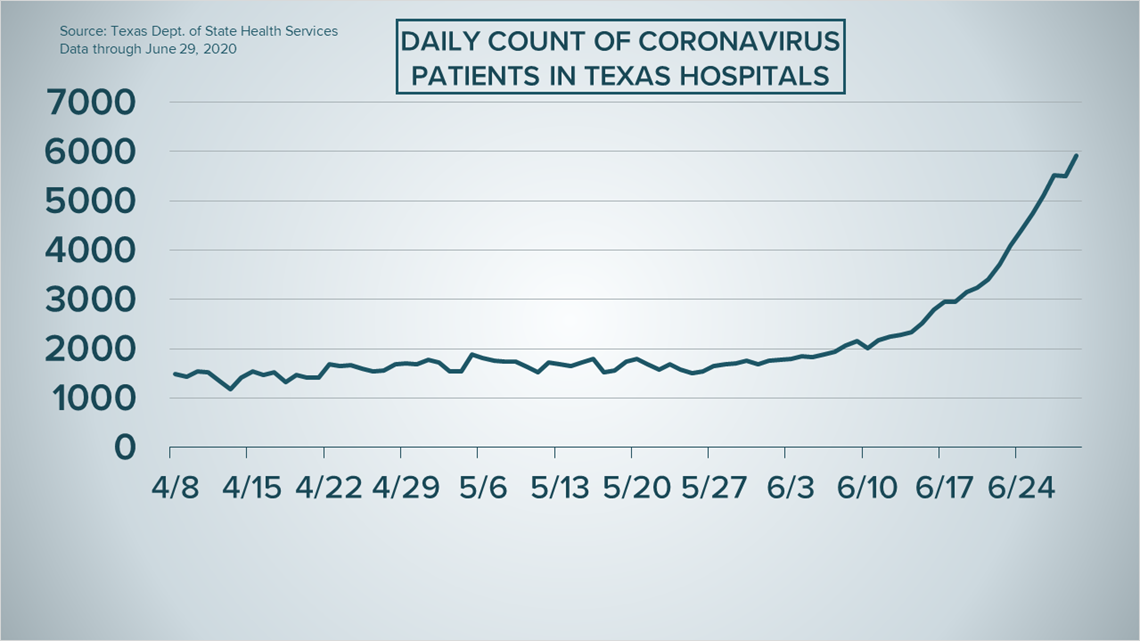
Latest Coronavirus Headlines
- Texas Jazz Festival CANCELED: Coronavirus concern leads to cancellation of Texas' largest and longest running Jazz festival
- Arizona Gov. Doug Ducey closing state's bars, gyms until July 27
- Hays County reports 2,233 active COVID-19 cases, 6 deaths
- When are major sports leagues restarting?
- SAPD reports 56 officers confirmed positive with COVID-19
- Bill Miller Bar-B-Q closes dining rooms and walk-ups
- COVID-19 not slowing down in Texas, positivity rate up to 14.3%
- Texas bars must close except for to-go, restaurants go back to 50% capacity: Gov. Abbott
- COVID-19 updates: VP Mike Pence, other White House officials urge Texans to wear masks during Dallas meeting with Gov. Abbott
Coronavirus symptoms
The symptoms of coronavirus can be similar to the flu or a bad cold. Symptoms include fever or chills, cough, shortness of breath or difficulty breathing, fatigue, muscle or body aches, headache, new loss of taste or smell sore throat, congestion or runny nose, nausea or vomiting and diarrhea, according to the Centers for Disease Control.
Most healthy people will have mild symptoms. A study of more than 72,000 patients by the Centers for Disease Control in China showed 80 percent of the cases there were mild.
But infections can cause pneumonia, severe acute respiratory syndrome, kidney failure, and even death, according to the World Health Organization. Older people with underlying health conditions are most at risk.
On June 25, the CDC expanded the list of groups at a higher risk of severe illness due to coronavirus.
Experts determined there was consistent evidence these conditions increase a person's risk, regardless of age:
- Chronic kidney disease
- COPD (chronic obstructive pulmonary disease)
- Obesity (BMI of 30 or higher)
- Immunocompromised state (weakened immune system) from solid organ transplant
- Serious heart conditions, such as heart failure, coronary artery disease, or cardiomyopathies
- Sickle cell disease
- Type 2 diabetes
The CDC believes symptoms may appear anywhere from two to 14 days after being exposed.
Human coronaviruses are usually spread...
- Between people who are in close contact with one another (within about 6 feet).
- Through respiratory droplets produced when an infected person coughs, sneezes or talks. These droplets can land in the mouths or noses of people who are nearby or possibly be inhaled into the lungs.
- Some recent studies have suggested that COVID-19 may be spread by people who are not showing symptoms.
Help stop the spread of coronavirus
- Stay home when you are sick.
- Eat and sleep separately from your family members
- Use different utensils and dishes
- Cover your cough or sneeze with your arm, not your hand.
- If you use a tissue, throw it in the trash.
Lower your risk
- Wash your hands often with soap and water for at least 20 seconds. If soap and water are not available, use an alcohol-based hand sanitizer.
- Avoid touching your eyes, nose, and mouth with unwashed hands.
- Avoid close contact with people who are sick.
- Clean and disinfect frequently touched objects and surfaces.
- The CDC recommends wearing a mask or cloth face covering if you have to be out due to an essential service or essential activity such as going to the grocery store.
- If you are 60 or over and have an underlying health condition such as cardiovascular disease, diabetes or respiratory illnesses like asthma or COPD, the World Health Organization advises you to try to avoid crowds or places where you might interact with people who are sick.

